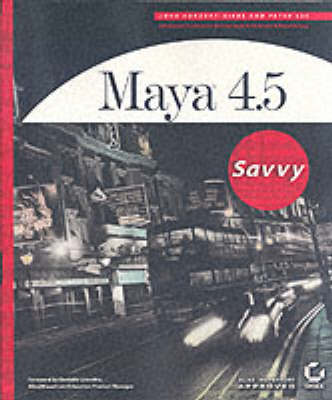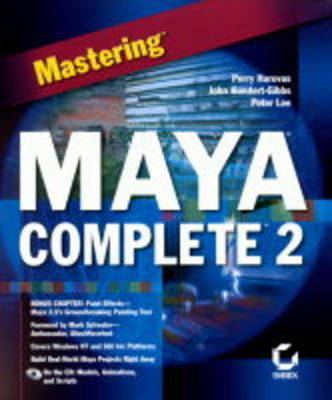Mastering
2 total works
Maya 4.5 Savvy
by John Leeland Kundert-Gibbs, Peter Lee, and John Kunder-Gibbs
Published 22 February 2002
"Maya" is a tool for 3D modelling, animation,and rendering used in many filmhouses for creating 3D animation and special effects. This publication has been updated for the 2002 version of "Maya" and contains: hands-on tutorials that integrate "Maya" instruction with real-world advice on planning, organizing, and managing digital content productions; and emphasis on high-quality images and professional examples throughout.
Mastering Maya Complete 2
by John Leeland Kundert-Gibbs, Perry Harovas, and Peter Lee
Published 18 January 2000
Maya is a tool for 3-d modelling, animation and a wide range of special effects. This book is a guide, step-by-step, to realizing concepts in models, characters and settings. Beyond the basics, this book shows how to create and animate complex models, use dynamics effects like particles and soft and rigid bodies, and programme Maya's interface with MEL scripting. This book gives coverage of Maya's features to: create photorealistic character animations (for games, movies and broadcast); harness the power of Paint Effects to create and animate painterly effects; model in NURBS and polygons; animate using keyframing, expressions and MEL; expand Maya's innate capabilities with MEL scripting; bind geometry to joints using rigid and smooth skinning; sculpt and weight objects with Artisan; create and use particles; and create and use soft bodies to produce complex behavior in Maya objects. In a section of interviews, industry developers talk about working with Maya. Alias|Wavefront insiders discuss the next frontier for Maya, explain how Paint Effects was developed and discuss the evolution of the Maya GUI.
Habib Zargarpour, an artist at Industrial Light and Magic, describes the integration of Maya into ILM's work on "Star Wars: Episode One, The Phantom Menace".
Habib Zargarpour, an artist at Industrial Light and Magic, describes the integration of Maya into ILM's work on "Star Wars: Episode One, The Phantom Menace".

